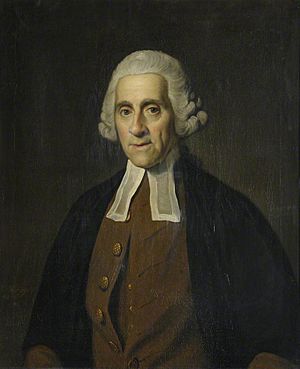Daniel Wray facts for kids
Daniel Wray (born November 28, 1701 – died December 29, 1783) was an English expert in old things, known as an antiquary. He was also a respected member of the Royal Society, a group for important scientists.
Daniel Wray's Life
Daniel Wray was born on November 28, 1701, in London. He was the youngest child of Sir Daniel Wray, a successful London businessman who made soap. His father was honored with a knighthood in 1708.
When Daniel was thirteen, he started school at Charterhouse School. Later, in 1718, he went to Queens' College, Cambridge, a famous university. He earned his first degree in 1722 and a master's degree in 1728.
Between 1722 and 1728, Daniel traveled to Italy. He went with James Douglas, who later became an Earl. This trip was a big part of his early life.
In 1729, Daniel Wray became a member of the Royal Society. This is a very old and respected group for people interested in science and knowledge. He also joined the Society of Antiquaries in 1741. This group studies history and old objects.
Daniel Wray became good friends with Philip Yorke in 1737. Philip Yorke was an important person in the government. In 1741, Philip Yorke gave Daniel a job as his deputy teller of the exchequer. This meant Daniel helped manage government money. He kept this job until 1782.
Daniel Wray had many friends who were writers and scholars. Some of his friends included William Heberden the elder and William Warburton. He loved collecting rare books and old items. In 1765, he was chosen to be a trustee for the British Museum. This is a very famous museum in London. He also helped younger scholars like Francis Wollaston.
Daniel Wray passed away on December 29, 1783. He was buried in a church in London. His wife, Mary, later gave his large collection of books to Charterhouse School in 1785.
Daniel Wray's Writings
Even though Daniel Wray wrote a lot, he did not publish many books during his lifetime. He wrote three papers for a journal called Archæologia. These papers were about ancient objects and history.
After he died, his friend George Hardinge collected some of Daniel's writings and letters. He published them in 1817. This helped people learn more about Daniel Wray's thoughts and work.


